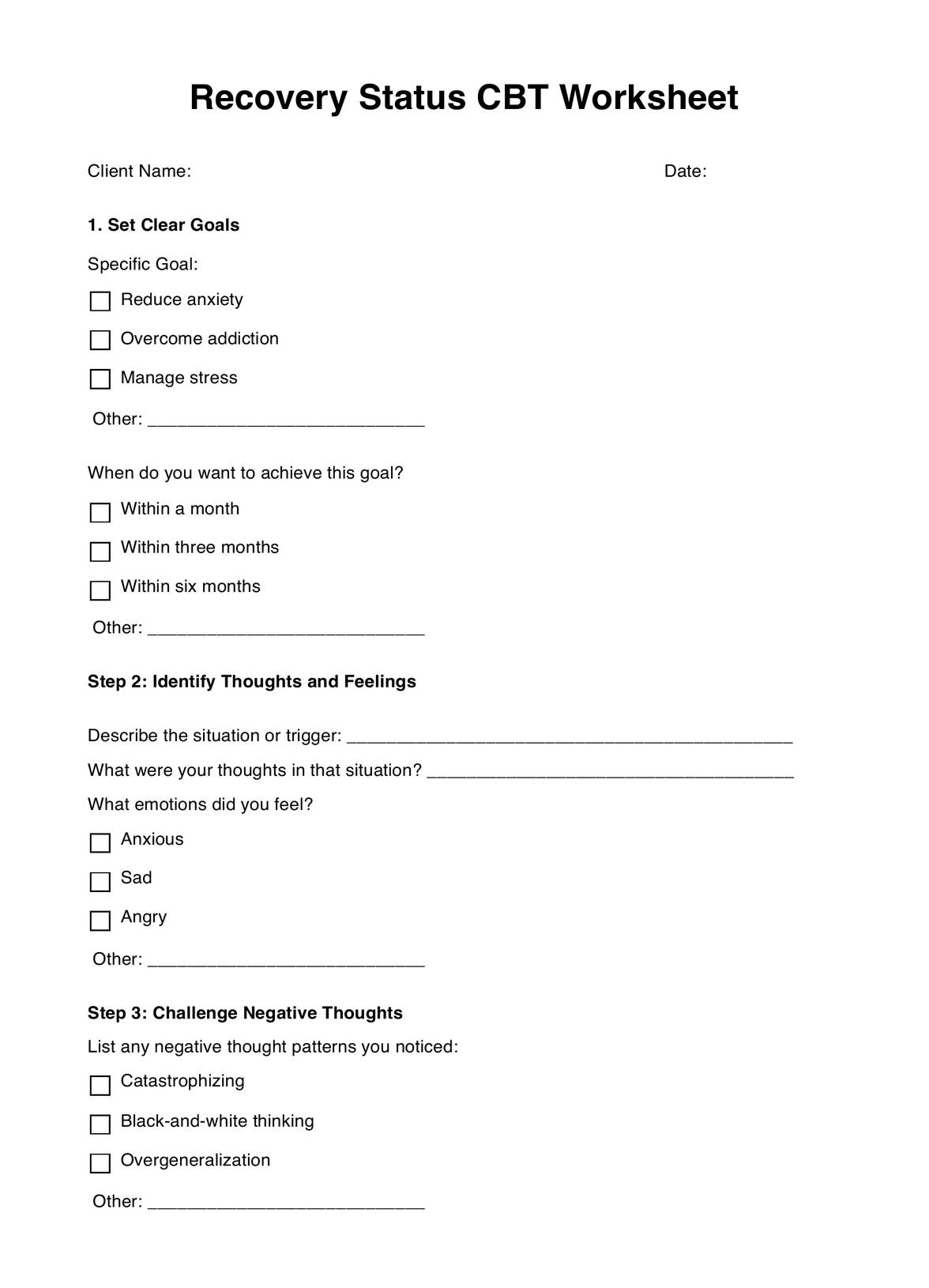The time varies, but it typically takes 20-30 minutes per session.

Recovery Status CBT Worksheet
The Recovery Status CBT Worksheet is a powerful tool for cognitive behavioral therapy. Learn how to use it, find an example, and understand its benefits.
Use Template
Recovery Status CBT Worksheet Template
Commonly asked questions
It assists in identifying and managing negative thought patterns, making it an essential tool in cognitive behavioral therapy.
It can be used by individuals in therapy and mental health professionals to aid clients in their journey toward improved mental well-being.
EHR and practice management software
Get started for free
*No credit card required
Free
$0/usd
Unlimited clients
Telehealth
1GB of storage
Client portal text
Automated billing and online payments











